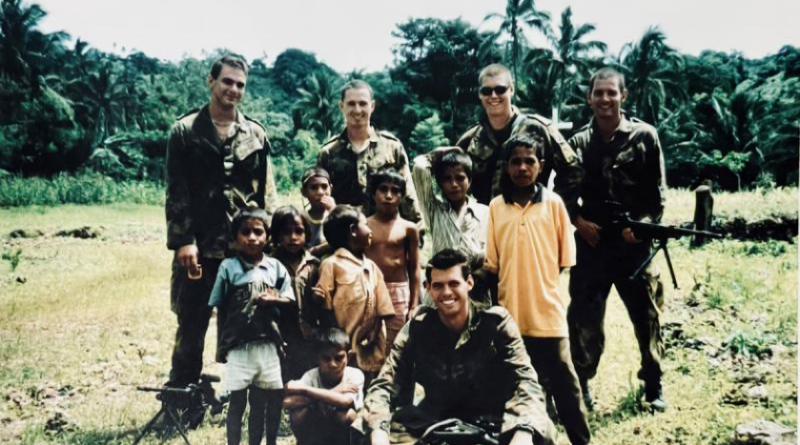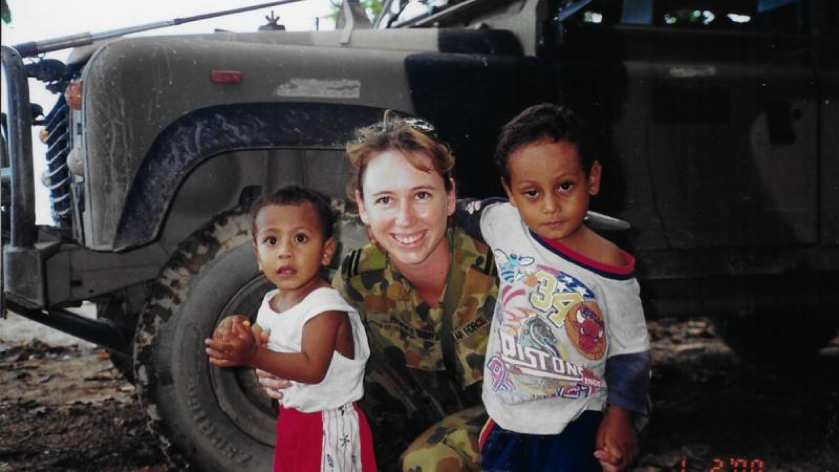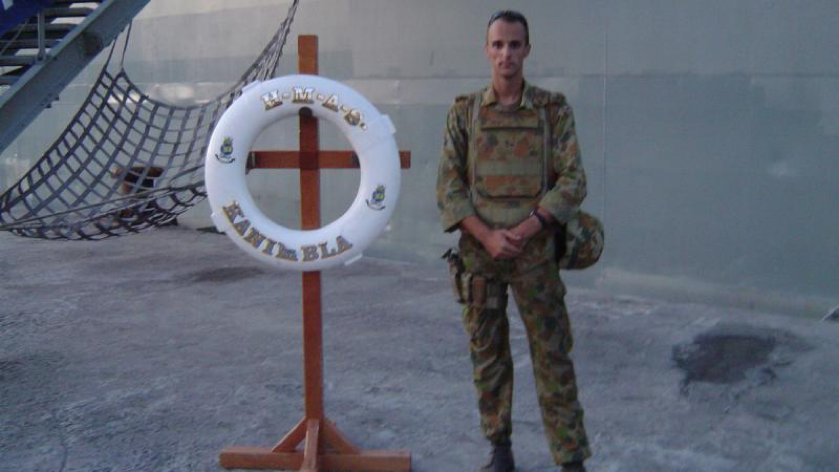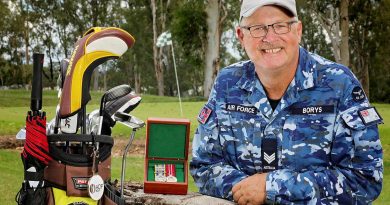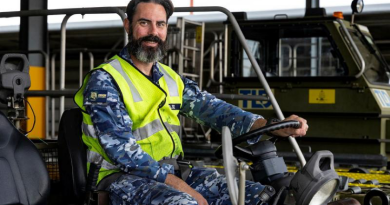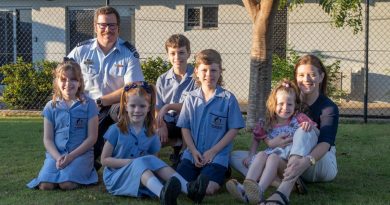Aviators remember ‘significant moment’ in peacekeeping
Share the post "Aviators remember ‘significant moment’ in peacekeeping"

In September of 1999, the world’s attention was firmly fixed on East Timor as it sought to restore its independence.
CAPTION: Then Flying Officer Harvey Reynolds, second from left, during his INTERFET deployment with 2 Airfield Defence Squadron on a routine patrol of Atauro Island, East Timor. Story by John Noble.
Australia led the deployment of the International Force East Timor (INTERFET), a multinational peacekeeping task force that restored peace and stability in East Timor in the aftermath of the independence referendum.
The Royal Australian Air Force played a significant role in supporting operations, with C-130 Hercules flights evacuating United Nations staff, foreign nationals and refugees from Dili to Darwin and Townsville.
Looking back on his involvement in the international effort to support the United Nations personnel already there, and facilitate humanitarian assistance operations in Dili some 25 years ago, Deputy Chief of Air Force Air Vice-Marshal Harvey Reynolds said it was a privilege to have been part of such an important multinational force, assisting a near neighbour restore its independence.
“The ability to see Timor-Leste become its own independent sovereign country and develop over the past two decades has been very rewarding,” Air Vice-Marshal Reynolds said.
“INTERFET was a watershed moment for the ADF given that Australia hadn’t deployed forces offshore to that scale since Vietnam.
“It was a significant moment in everybody’s lives who were involved because it was quite unprecedented in our collective periods of service.
“Our air contingent had a range of important roles including security and running the main airfield, air traffic control, coordinating the checking and identification processes there, and helping screen and secure air terminal services, enabling the movement of people in and out of Dili to effectively re-populate areas that had been displaced during the previous period of upheaval.”
CAPTION: Then Flight Lieutenant Sandy Turner during her six-month assignment in Dili on deployment with INTERFET.
Air Commodore Sandy Turner served in East Timor both in an Air Force capacity and also with the United Nations.
As a young flight lieutenant at the time, Air Commodore Turner spent six months in East Timor from December 1999 and reflects proudly on the lasting impact INTERFET and the Australian-led effort has had on East Timor.
“There’s been an incredible change in the country and it’s so pleasing to see the difference that we made and a lot of my peers made in that time,” Air Commodore Turner said.
“I was lucky enough to go back over there in 2019 for the 20th anniversary so I got to see a fully functioning capital in Dili with people going about their daily business, seeing businesses that were open, and very importantly observing children going to school.
“Being able to see a young democracy develop out of such a situation and that we had a role in helping that happen was really quite profound for me.
“Australia leading the effort to help shape the future of East Timor was an incredible experience to be a part of.”
Long after INTERFET began helping restore peace and security to East Timor, Air Force was able to continue supporting Australia’s deployment to the region through its involvement with Operation Astute in the 2006 security crisis.
A largely peacekeeping mission, Operation Astute involved Air Force maintaining the all-important air bridge from Dili to Darwin and Townsville in order to help transport troops and supplies into East Timor, as well as to evacuate civilians.
CAPTION: Then Leading Aircraftman Chris Watkins at the Port of Dili during his deployment with Operation Astute in 2006.
Warrant Officer Chris Watkins remembers his involvement in the intervention well.
Just 21 when he arrived in Dili, he said helping to restore peace in the country as violence erupted again between the East Timor police and military was the primary focus.
“Once we got on the ground in Dili, it was obvious the place was very heavily damaged and there had been a substantial loss of life,” Warrant Officer Watkins said.
“The team of originally eight people that I went in with, we received pretty much every aircraft that came into Comoro Airfield in Dili, now known as President Nicolau Lobato International Airport, which was Australian C-130 Hercules, Royal New Zealand Air Force C-130s and 757s, Malaysian aircraft and US Navy aircraft.
“This saw us help offload cargo and passengers and then turn those aircraft around pretty quickly. We were also conducting a non-combatant evacuation operation for Australian citizens and foreign nationals who chose to leave East Timor, plus air and medical evacuation patients.
“In just the first week alone, we managed to evacuate about 600 people. An average of one flight every 45 minutes, 24 hours a day is what we were facing.
“My experience in East Timor really reinforced why we have the skills and capabilities in Air Force needed to get very difficult tasks like East Timor done.”
Air Vice-Marshal Reynolds added: “INTERFET clearly showed that when the ADF and Air Force take something very seriously, such as East Timor, how quickly we can respond and what scale we can deliver incredibly effective air power to help people in need.
“It’s often a matter of luck and timing if you’re in the right unit in the right place at the right time to get to participate in these sorts of missions, so I and others in Air Force were very fortunate in 1999 and beyond.”
.
.

.
.
Share the post "Aviators remember ‘significant moment’ in peacekeeping"

